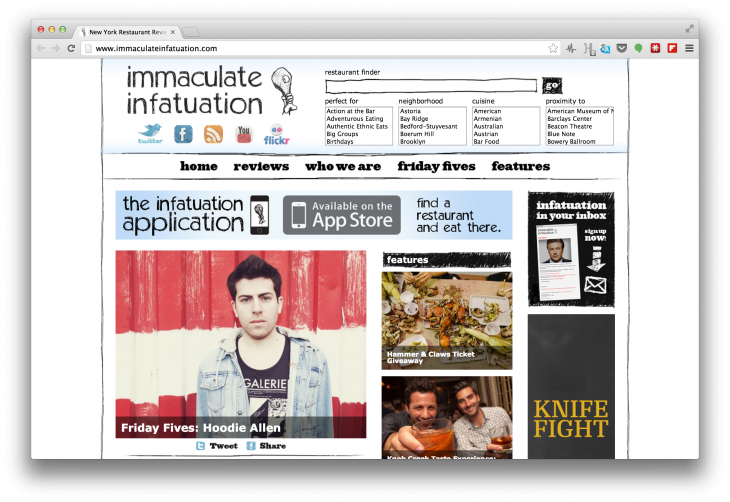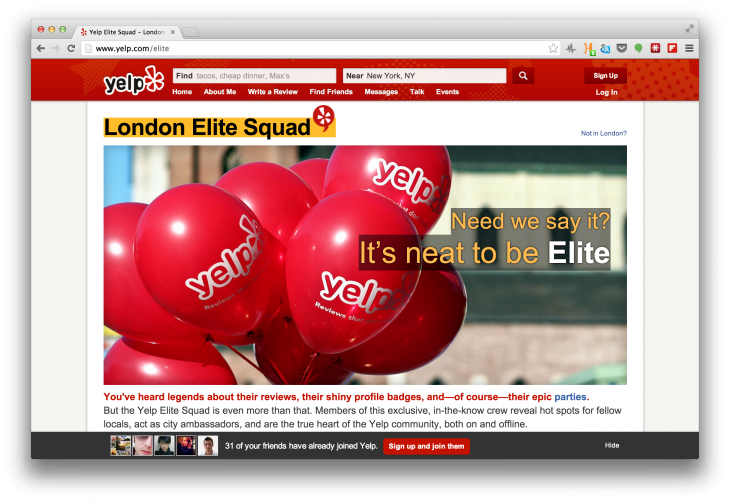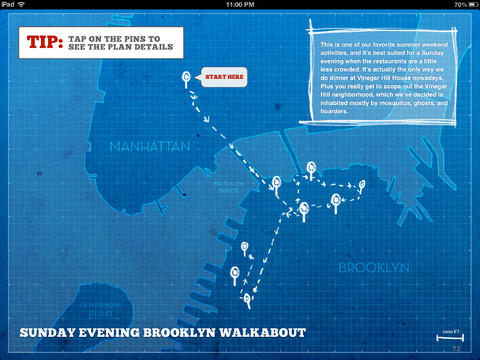
Food criticism has always been, for the most part, under the grip of the old guard. Accessibility, being relatable, and, as far as diction is concerned, readability were never much part of the protocol, and so any conversation surrounding the simple act of dining was kept to the printed page. But that doesn’t work anymore, certainly not in New York, where the Internet and multi-borough food culture have attracted a swarm of twenty-somethings and up.
Chris Stang and Andrew Steinthal, two music executives who together function as Immaculate Infatuation, have become, in many circles, the de facto voice for this crowd, and their Guide to Killing It This Summer is the short answer as to why. Now in its second running, the publication, released as an Apple iBook, comes in at 78-pages, with 175-high resolution photos and interactive features to guide readers through days of dining and drinking in the remaining weeks of hot weather, and then beyond.
The guide, which sells for $2.99, joins the Immaculate Infatuation iPhone app and website in a line of digital products that form what is, at its core, a technology-driven brand. Though steeped in a classic trade, Stang and Steinthal are ultimately employing technology to extend the reach of high quality content, which their crowdsourcing-focused competition often fails to do. “Everything we do is part of a plan to bring Immaculate Infatuation to people across a number of different platforms.
The website, the app, the guides — we plan on expanding upon all of them in the future,” Steinthal said, adding, “We never once thought about print. We knew that the best way for us to reach people was to do so through their screens, and we also knew that if we could create great content and tap into social media, it would grow.”
As with the website and app, the spark for the iBook was, at its base, technology — an opportunity to create a publication that leverages the capabilities of the iPad.
“When we did the first one last year, Apple had just released the iBooks author program, and we found that to be an interesting way to produce something more interactive, relatively easily,” explains Steinthal. The opportunity provided by the iPad to publish whenever, wherever gave shape to an outlet otherwise overlooked by their typical online content. “The Summer Guide definitely gives us the opportunity to cover some different kinds of places which usually wouldn’t qualify for full reviews for one reason or another,” Steinthal says.
The content here, as opposed to the site, is season-specific, allowing Steinthal and Stang to preserve one outlet while extending their brand with another.
“For this year, we went bigger and better,” adjusting their approach to focus on the experience of existing restaurants and bars and how, in a single day, they connect with one another. Fortunately, the underpinnings of the product remain trenched in the editorial voice.
The guide can be read traditionally, page by page, through a series of on-topic, summer-specific categories: Best of the Patio Situations, Sidewalk Dining and Tables Outside, or Summer Drinking, which are further subdivided into specific locations and drinks. Here, the voice of their site carries through — ”Gowanus Yacht Club is basically someone’s shitty basement, but above ground and with a liquor license. And that is precisely why it’s awesome,” reads one suggestion; “Williamsburg is the new Soho, and it’s places like the Ides that have all those super cool types riding the L train to Bedford with the rest of us,” reads another.
A print publication would be possible under different circumstances, Steinthal says, “but in general, we invest our time, energy, and money into these relatively new platforms because we believe in them.” Their brand, with this approach in mind, really thrives in the merging of strong content and targeted technology — not one without the other, and not with shortcuts provided by the latter.
Curation vs data
“We believe strongly that technology, especially in the recommendations category, is fairly useless without content,” said Steinthal. “We were confident that if we put our content into an app and matched it up with app technology like geolocation, that people would find it useful in their daily lives.”
To this end, the app and site don’t replicate one another — the latter has added layers of content, while the app focuses in many ways on the immediate needs fulfilled by location-based technology. And while the market for recommendation-driven iPhone and iPad apps is highly competitive if not supersaturated, many products lack the eye and expression to justify their purpose, driven most often by engines and algorithms. Instead, Steinthal and Stang hold on to their core strength — taste, voice, and perspective, a rarity in a socially driven market.
Regardless, each camp — expert driven or crowdsourced — has its strengths, and competitors like Foursquare and Yelp have long been moving toward adding a certain level of viability to hundreds of thousands of users reviewing everything, everywhere. Yelp, for example, has its Elite Squad, a selection of users around the world who are considered, in essence, editorial role models and experts.
To the 42 million reviews provided by Yelp users, the Elite Squad adds a global form of expertise — while not necessarily driven by character or the site’s design, they ultimately provide a certain utility to an enormous global (and globally scalable) base.
From a different angle, Foursquare has recently begun an aggressive push toward discovery and is finally finding some value in all of those seemingly meaningless check-ins you’ve amassed over the years. Powerfully, its suggestions are based on data — your data, to be specific — and then backed by the opinions, amassed in the app, of its users.
Whereas Immaculate Infatuation relies on some input to start the user off — Dinner with the Parents, Full On Pork Indulgence, and See and Be Seen, for example — Foursquare can begin pushing suggestions on anything just by knowing where you’ve been, where your friends have been, and where you are at the moment. The more you put in, the more you get out, in short.
In essence, it’s this mechanization of discovery that provides Stang and Steinthal a certain level of brand strength, as their reputation is largely and somewhat traditionally in their personality. Apps like Tastemade and Chefs Feed combine these two methodologies to varied success, providing crowdsourced recommendations from users and the opinions of celebrity chefs, who in their own way exert a similar influence through expertise.
Where Stang and Steinthal seems to have found their strength is in trust and accessibility, which ultimately places them head-to-head with publications more than products. But while they dabble in coast-to-coast coverage — Napa’s French Laundry, for example, where “you best believe that every course is going to be scrutinized like an episode of Lost,” — scalability obviously has its limitations. The global frontier, then, may depend more on personality than technology, as a recent partnership with MTV for a Video Music Award giveaway might suggest.
With this in mind, the methodology that drove their launch is not all that different from printed media, providing up-to-date coverage in a scene as old as New York. The content is the priority, but whereas print competitors are struggling to reach a younger generation, Steinthal and Stang are fostering more level-headed connections by cross all platforms.
With this keen understanding of this audience — Steinthal and Stang are, in many ways, emblematic of its age and interest — they built digital outlets “because nobody else was doing it,” insofar as the iPhone was concerned, and “because we knew our audience wanted it,” Steinthal explained. “We like to think we have good instincts when it comes to the nuts and bolts of online strategy, but we also probably sacrifice some of the SEO details and the like in favor of a strong and creative social media presence.”
“Be honest, be objective, and stick to your guns. Most importantly, know the audience that you’re trying to talk to. If you’re trying to reach the average person who has a recreational interest in theater, don’t talk to them like they should know who all the inside players are,” Steinthal explained.
“We’ve managed to really become a part of people’s lives, and that’s an incredibly special thing. We go to great lengths to protect and foster that relationship with our readers, and that in turn helps us spread and reach new readers,” he added. “The Internet is a beautiful thing.”
Image credit: Thinkstock
This article contains an affiliate link. While we only ever write about products we think deserve to be on the pages of our site, The Next Web may earn a small commission if you click through and buy the product in question.
Get the TNW newsletter
Get the most important tech news in your inbox each week.









